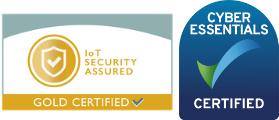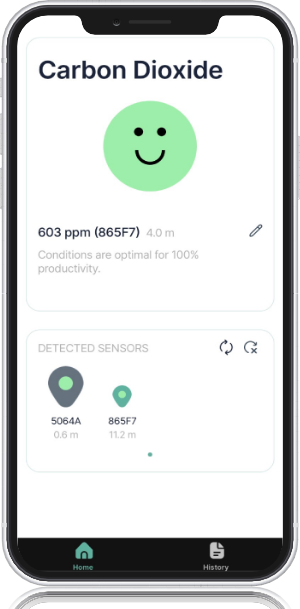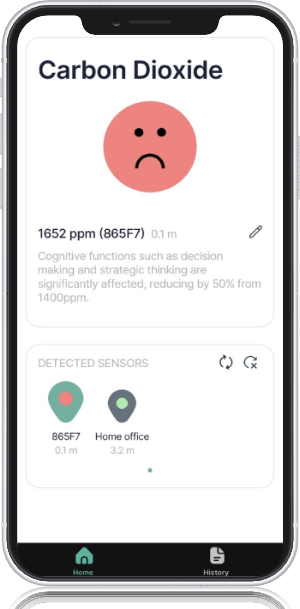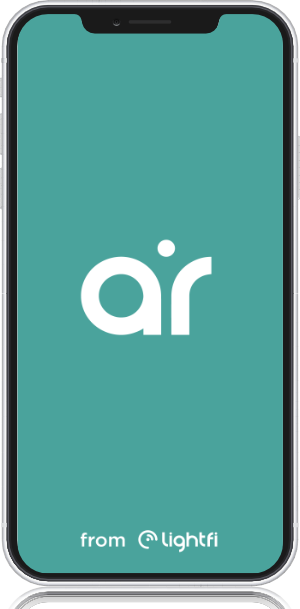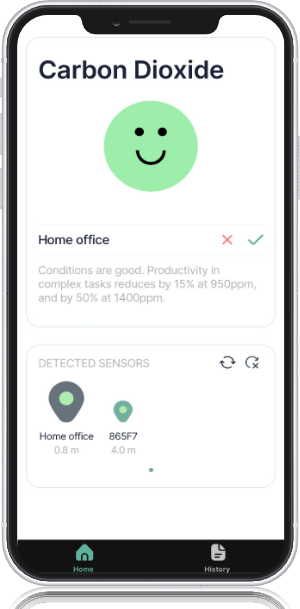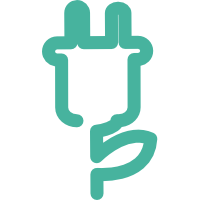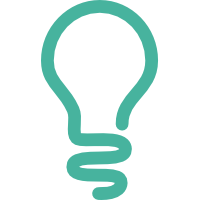Introducing
Our technology
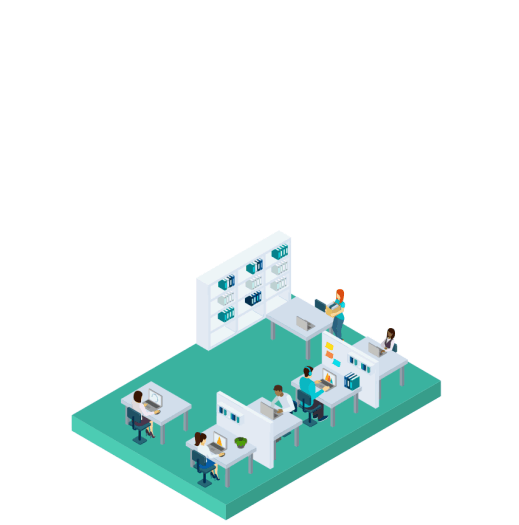
Sensors
Our multi-sensor IoT system can be quickly installed to monitor live indoor occupancy levels and environmental conditions
It is a fully customisable system – which can be extended with 10s-100s of IoT sensors without additional cabling or new IOs.
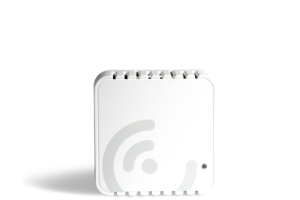
Sahara – Indoor air quality sensor
More info
The Sahara sensor is fully kitted out to measure:
- Carbon Dioxide (CO2) with a dual-channel NDIR chip (accuracy to WELL & RESET standards)
- Dust particulate matter (PM2.5)
- (optional) Volatile Organic Compounds (VOCs) or ambient light & colour
It can be powered via a micro-USB cable or internally via hidden cables, compatible with 5V USB adapters.

Base – Occupancy and building automation
More info
The “Base” is our long-range, broad level occupancy sensor, which determines the percentage occupancy levels by measuring the number active devices on a floor area c.3,000 – 5,000 sqft wide.
It also acts as a gateway node for our other wireless IoT sensors, and forms the backbone of our system.
The Base can integrate directly with your building infrastructure (e.g. your BMS), locally via industry standard protocols (BACnet/IP), reducing energy consumption, lowering carbon emissions and improving comfort & air quality.
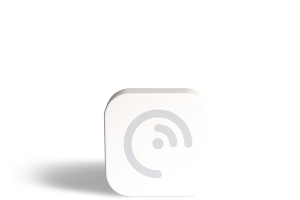
Hal – Granular occupancy count
More info
Hal is a ceiling-mounted sensor counts number of people in a room. For a normal office ceiling of ~2.5m Hal’s range is 6m x 6m.
It uses infrared technology and edge machine learning to detect thermal signatures (related to people) that are present in its field of view. It pin points the position as well as counting the number of people.
It is battery powered and has an estimated battery life of 5 years.
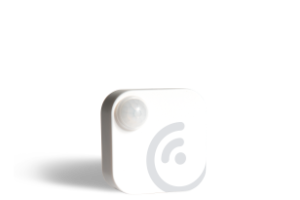
X1 – Desk motion sensor
More info
The X1 sensor is designed to measure if a desk is occupied, not occupied, or how long since it was last occupied. It uses a passive infrared (PIR) sensor chip to detect the movement of heat.
It is battery powered and lasts up to 5 years.
It is designed to be easily stuck under a desk, but can also be placed in a small meeting room.
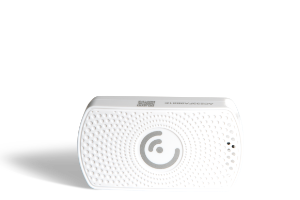
Hoth – Temperature and humidity sensor
More info
The Hoth sensor measures temperature and relative humidity. Multiple temperature sensors in one space can be used to create and monitor spatial heatmaps, and balance floor heating or cooling, especially where solar gain is high.
It is battery powered, lasts up to 5 years.
Recommended placement is at shoulder height, away from heating or cooling sources.
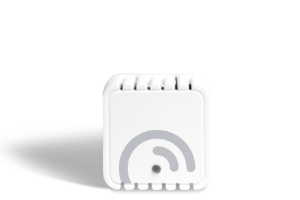
Sahara Lite – CO2 sensor
More info
The Sahara Lite sensor is the smaller brother of the Sahara, and measure only CO2 levels (via a dual-channel NDIR chip)
It is powered via a USB C cable, and can be used with any 5V USB power supply, for example your laptop or an adapter.

Live Data Platform
Data collected in your buildings can be monitored in real-time and on the go through our insight digital portal
Intuitive dashboards, with historic analytics, live floor-plans, heat-maps and timeline
Different levels of information for building managers and building end user
Email alerts and notification when environment quality levels drop below optimal benchmarks.
Quickly identify areas in need of attention
IoT sensors
Sensor Unit
The data starts with the sensor units selected by the customer, such as air quality or temperature sensors. These subsidiary sensors operate in a transmit-only mode to send data to the LightFi Base sensor. The base sensor operates as both a sensor gateway and our patented long range occupancy level sensor.
The Base Sensor
It includes an internal firewall and only communicates data outward to our managed IoT cloud systems using authenticated and encrypted connections.
BMS Integration and Building Automation
The base sensors can also send data directly into building management systems (BMS) to, for example, control ventilation based on occupancy levels, provide healthy and comfortable working conditions while saving a lot of energy.
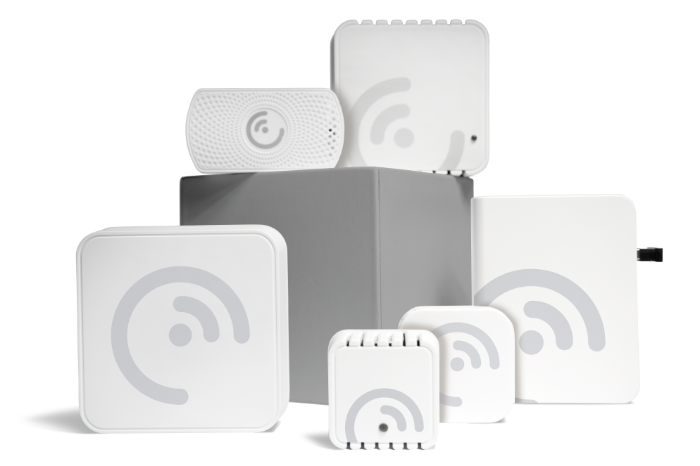
How it works
A simple and quick installation process

Plug & play sensors
 Indoor air quality
Indoor air quality Temperature
Temperature Occupancy
Occupancy

Real-time & forecast data platform
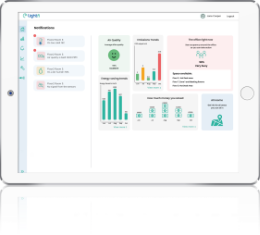
with optional BMS integration

Guaranteed Benefits
- Healthy work environment
- Occupancy-based energy use
- Optimal use of space
Technical info
Our secure architecture
Highly secure
Data is stored securely in the cloud and approved users can authenticate using our managed user system to view data for their building(s) using our web platform. User access can be restricted on a per site/building/floor basis depending on customer needs. Sensor device functionality is restricted throughout to ensure only minimal required hardware and services are used. The limited nature of the communication used means that it is possible for customers to implement highly secure locked down internal networks and firewalls to further enhance their own security.
Protecting your information and privacy
Sensor selection can be tailored to customer needs but even the most extensive sensor package installed in a building presents both lesser potential intrusion (no microphone, camera etc.) and smaller attack surface (stripped down connectivity, minimal software overhead and hardware capabilities) than a typical mobile phone carried by building occupants. The sensor system is fully GDPR compliant, and LightFi does not collect personally identifying information from the sensors. A DPIA is carried out regularly and fully accessible to our clients.
